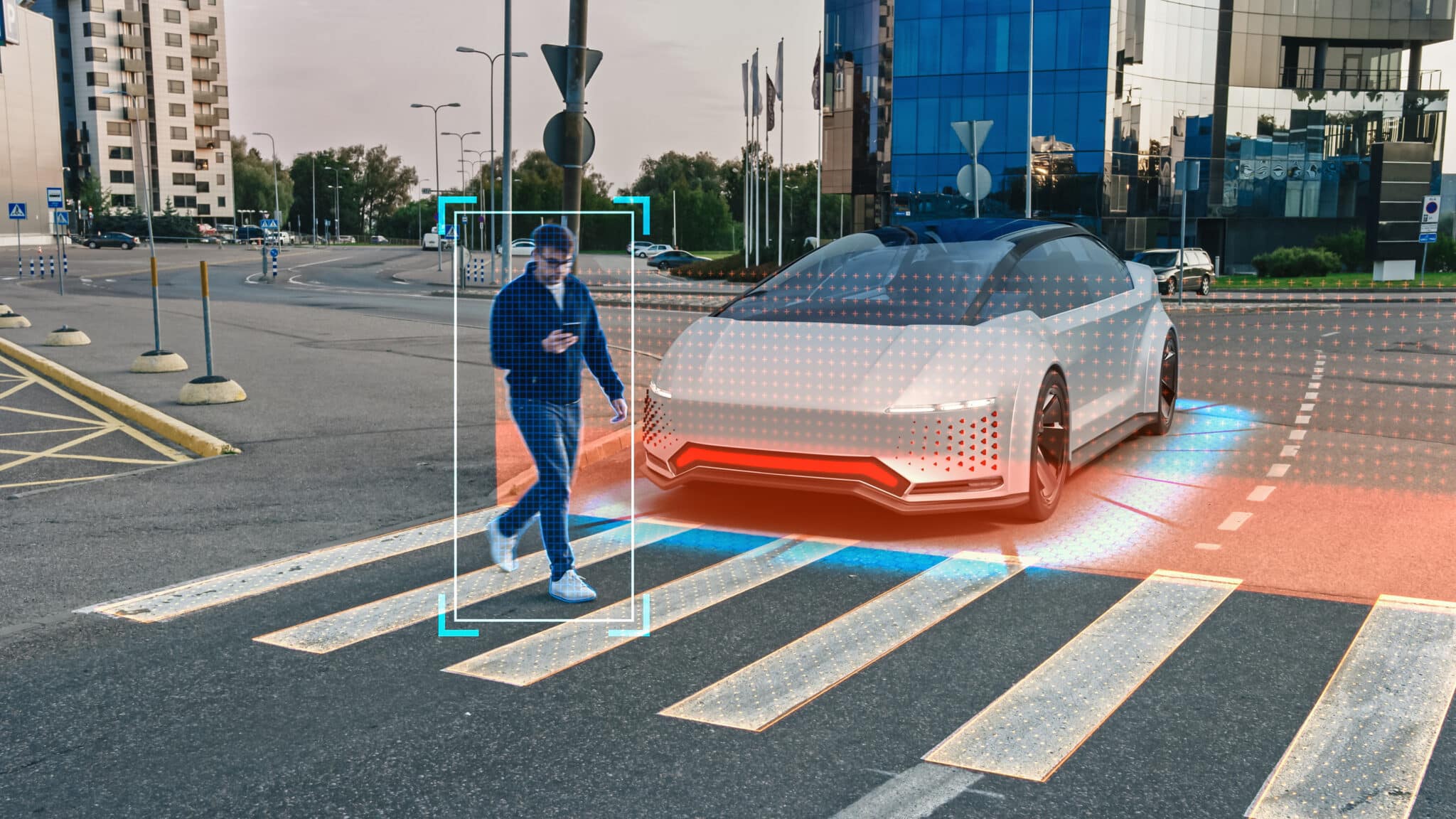As a lawyer specializing in pedestrian accident claims, I’ve seen firsthand how these incidents can turn lives upside down. The National Highway Traffic Safety Administration reported 6,516 pedestrian fatalities in 2020, accounting for 17% of all traffic deaths. This staggering statistic underscores the critical need for understanding the intricacies of pedestrian accident claims. I’ve helped countless individuals navigate the challenging aftermath of such incidents, and I’m here to share insights that can empower you to protect your rights and secure fair compensation.
The Governors Highway Safety Association (GHSA) projects an even more alarming figure for 2023, with an estimated 7,318 pedestrian deaths in traffic crashes across the U.S. These numbers aren’t just statistics – they represent real people whose lives have been irrevocably changed. Let’s dive into the often-overlooked aspects of pedestrian accident claims that can make all the difference in your case.
The Invisible Burden: Psychological Impact on Pedestrian Accident Victims
When we talk about pedestrian accidents, it’s easy to focus solely on the physical injuries. But let me tell you, the psychological trauma can be just as debilitating, if not more so. I’ve worked with clients who looked perfectly fine on the outside but were battling invisible demons on the inside.
Post-Traumatic Stress and Its Legal Implications
Post-Traumatic Stress Disorder (PTSD) is a common aftermath of pedestrian accidents that often flies under the radar. I’ve seen clients struggle with flashbacks, nightmares, and crippling anxiety that make it impossible to cross a street or even leave their homes. These symptoms aren’t just personal hurdles; they’re crucial elements in building a comprehensive claim.
In the legal world, we need to translate these psychological impacts into tangible evidence. This is where detailed documentation becomes your best friend. I always advise my clients to keep a journal of their symptoms, therapy sessions, and how their emotional distress affects their daily life. It’s not just about feeling bad – it’s about showing how PTSD has concretely impacted your ability to work, socialize, and enjoy life.
Documenting Emotional Distress
Proving psychological damage in court is no walk in the park. It requires a meticulous approach and often the testimony of mental health experts. I’ve found that courts respond well to concrete evidence – therapy records, expert opinions, and even testimony from friends and family about behavioral changes.
Here’s a quick breakdown of how common psychological symptoms can impact your legal claim:
| Common Psychological Symptoms | Potential Legal Impact |
|---|---|
| Anxiety | Increased compensation |
| Depression | Loss of earning capacity |
| PTSD | Pain and suffering damages |
| Insomnia | Medical expenses for therapy |
| Phobias | Lifestyle changes compensation |
The Role of Therapy in Recovery and Claims
I can’t stress enough how crucial ongoing mental health treatment is – both for personal recovery and for strengthening your legal claim. Therapy records provide tangible evidence of the accident’s psychological impact and demonstrate your commitment to recovery. I’ve seen settlement amounts increase significantly when we’ve been able to present a clear picture of ongoing psychological treatment.

[Source: Geode Health]
Social Anxiety and Public Spaces
One of the most heartbreaking consequences I’ve witnessed is the development of severe social anxiety, particularly in public spaces. I’ve had clients who were once outgoing and active become virtual shut-ins, terrified of crossing streets or walking in busy areas. This anxiety can profoundly impact a person’s lifestyle, affecting their ability to work, socialize, or even perform basic daily tasks.
Quantifying Quality of Life Changes
In legal terms, we call this a “loss of enjoyment of life,” and it’s a critical component of many pedestrian accident claims. Assessing and presenting these lifestyle alterations due to anxiety is no small feat. We often use quality of life questionnaires and expert psychological evaluations to quantify these changes in a way that resonates in legal proceedings.
I remember a case where my client, a former marathon runner, developed such severe anxiety after being hit by a car that she couldn’t bring herself to jog outside anymore. We were able to demonstrate how this dramatic lifestyle change impacted not just her physical health but her entire social life and sense of self. It made a significant difference in her compensation.
Did you know that the average payout for a pedestrian hit by a car is approximately $67,511.90, with a median settlement of $30,000? These figures, based on data from pedestrian accident settlements in the last three years (2021 to 2024), highlight the financial stakes involved in these cases. However, it’s crucial to remember that every case is unique, and these averages don’t necessarily reflect the potential value of your specific claim.
The Urban Planning Perspective: Infrastructure’s Role in Pedestrian Accidents
Now, let’s shift gears and talk about something that doesn’t get enough attention in pedestrian accident cases: urban planning and infrastructure. As someone who’s delved deep into countless pedestrian accident cases, I can tell you that the design of our cities plays a huge role in pedestrian safety.
Crosswalk Placement and Visibility
I’ve seen cases where poorly designed or maintained crosswalks were the real culprits behind accidents. It’s not always about distracted drivers or careless pedestrians. Sometimes, it’s about a crosswalk placed just after a blind curve or faded markings that are barely visible on a rainy night.
Leveraging Traffic Engineering Reports
This is where traffic engineering reports become your secret weapon. These documents are gold mines of information about road design, traffic patterns, and safety measures. I once handled a case where a traffic engineering report revealed that a crosswalk where my client was hit had been flagged as dangerous years before the accident, but no action was taken. That report was crucial in establishing the city’s negligence.
Street Lighting and Pedestrian Safety
Let’s talk about something that’s often overlooked but incredibly important: street lighting. I can’t tell you how many cases I’ve seen where poor lighting was a major factor in pedestrian accidents. It’s not just about being able to see; it’s about being seen.

[Source: The Conversation]
Time-of-Day Analysis in Claims
When I’m building a case involving poor lighting, I don’t just look at the time of the accident. I dig deeper. We analyze seasonal variations in natural light, weather conditions, and even the functionality of nearby street lights. I remember a case where we discovered that several street lights near the accident site had been out for weeks, creating a dangerous dark spot. This evidence was crucial in proving the city’s negligence.
Municipal Liability in Poor Infrastructure Cases
Holding city authorities accountable for poor infrastructure isn’t easy, but it’s not impossible. It involves navigating complex legal procedures and often overcoming immunity defenses. But when we succeed, it can lead to significant compensation for the victim and, importantly, push for changes that make our streets safer for everyone.
Did you know that urban areas account for 84% of pedestrian traffic fatalities, according to the National Highway Traffic Safety Administration? This statistic underscores the critical importance of urban planning in pedestrian safety.
For a deeper dive into how urban infrastructure impacts road safety, check out our guide to Las Vegas truck accidents. While it focuses on truck accidents, many of the insights on city planning and road safety apply to pedestrian cases as well.
The Technology Factor: Modern Elements in Pedestrian Accident Claims
In my years of practice, I’ve witnessed a significant shift in how technology influences both the causes of pedestrian accidents and the claims process. It’s a double-edged sword that we need to understand and leverage effectively.
Smartphone Distraction: A Two-Way Street
Let’s face it – smartphones have become a major player in pedestrian accidents. And I’m not just talking about distracted drivers. I’ve handled cases where pedestrians were so engrossed in their phones that they walked right into traffic. It’s a two-way street of distraction that’s changing the landscape of liability in these cases.
Digital Forensics in Accident Investigation
This is where digital forensics comes into play. In recent years, I’ve increasingly relied on digital forensic experts to retrieve and analyze smartphone data. It’s amazing what we can learn from app usage patterns, text message timestamps, and even GPS data. I once had a case where we were able to prove that a driver was actively using a social media app at the moment of impact. That evidence was a game-changer in the settlement negotiations.
App Usage Patterns and Liability
It’s not just about whether someone was using their phone, but what they were doing on it. Navigation apps, games, social media – each can affect attention and reaction times differently. I’ve seen cases where the specific app a person was using became a crucial factor in determining liability.
Advanced Driver Assistance Systems (ADAS) and Pedestrian Detection
Now, let’s talk about the cutting edge of automotive technology: Advanced Driver Assistance Systems (ADAS). These systems, including pedestrian detection technologies, are becoming standard in newer vehicles. But here’s the kicker – they’re not infallible.

[Source: Caradas]
ADAS Failure Analysis
I’ve handled cases where ADAS systems failed to prevent a pedestrian accident, and let me tell you, these cases are complex. They often require in-depth failure analysis, involving system logs and expert testimony from automotive technology specialists. In one case, we discovered that a vehicle’s pedestrian detection system had a known blind spot in certain lighting conditions – information that wasn’t adequately communicated to drivers.
Understanding these technological factors is crucial in modern pedestrian accident claims. It’s not just about what happened on the street anymore; it’s about what was happening inside the vehicle and on our devices. As technology evolves, so must our approach to these cases.
The Economics of Waiting: Long-Term Financial Planning for Claim Resolution
One aspect of pedestrian accident claims that often catches my clients off guard is the waiting game. These cases can take time to resolve, and that waiting period can put significant financial strain on victims. Let’s break down what you need to know about managing your finances during this crucial time.
First, let’s look at the typical timeline of a pedestrian accident claim:
| Claim Resolution Stage | Average Duration | Potential Financial Impact |
|---|---|---|
| Initial Investigation | 1-3 months | Medical bills accumulation |
| Insurance Negotiations | 3-6 months | Lost wages, ongoing treatment |
| Litigation (if needed) | 1-2 years | Legal fees, extended recovery costs |
| Settlement or Trial | 6-18 months | Final compensation determination |
As you can see, we’re potentially looking at months, if not years, before a final resolution. That’s why long-term financial planning is crucial.
Structured Settlements vs. Lump Sum Payouts
When it comes to compensation, you’ll often have a choice between structured settlements and lump sum payouts. This decision is more complex than it might seem at first glance.
Structured settlements offer regular payments over time, which can provide financial stability and potentially tax benefits. On the other hand, a lump sum gives you immediate access to all your compensation, allowing for large purchases or investments.
I had a client once who was tempted by the idea of a lump sum but ultimately chose a structured settlement. It turned out to be a wise decision as it provided her with a steady income stream during her extended recovery period.
Tax Implications of Settlement Options
Here’s something many people don’t realize: different payout methods can have varying tax implications. While most personal injury settlements are tax-free, certain portions, like punitive damages or interest on judgments, might be taxable. I always advise my clients to consult with a tax professional to understand the full implications of their settlement structure.
Interim Financial Solutions
While waiting for your claim to resolve, you might need to explore interim financial solutions. These could include personal loans, disability benefits, or assistance programs. I’ve seen clients successfully use these options to bridge the gap, but it’s crucial to understand how they might impact your claim.

[Source: Shutterstock]
Litigation Funding: Risks and Benefits
Litigation funding is an option some of my clients consider. It can provide necessary financial support during the claims process, but it comes with its own set of risks. The interest rates can be high, and it might affect your final settlement amount. I always advise careful consideration and thorough understanding of the terms before pursuing this option.
Negotiating Medical Liens
Here’s a pro tip: don’t overlook the impact of medical liens on your final settlement. These liens can significantly reduce your compensation. I’ve had great success in negotiating these liens down, sometimes by as much as 50%. It requires understanding your rights, knowing the lien laws in your state, and employing effective negotiation strategies with medical providers and insurers.
Remember, the goal is not just to win your case, but to ensure that the compensation you receive truly covers your needs, both immediate and long-term. Proper financial planning during the claims process is key to achieving this goal.
The Role of Comparative Negligence in Pedestrian Accident Claims
Now, let’s tackle a concept that can make or break your pedestrian accident claim: comparative negligence. It’s a legal principle that can significantly influence the outcome of your case, and understanding it is crucial for developing an effective legal strategy.
Jaywalking and Its Legal Implications
Jaywalking is often thrown around as a defense in pedestrian accident cases, but its impact on liability isn’t as straightforward as you might think. I’ve handled cases where jaywalking was a factor, but we were still able to secure substantial compensation for the client.
For instance, I once represented a client who was hit while crossing outside a designated crosswalk. Initially, it looked like a clear-cut case of jaywalking. However, we discovered that the nearest crosswalk was over half a mile away and poorly maintained. This context helped us argue that my client’s actions were reasonable given the circumstances, significantly reducing her comparative fault.
Challenging Jaywalking Allegations
If you’re facing jaywalking accusations in your claim, don’t lose hope. There are several strategies we can use to contest or contextualize these allegations. We might demonstrate unclear signage, prove the absence of safe crossing alternatives, or show that your actions were reasonable given the circumstances.
I remember a case where we successfully challenged a jaywalking allegation by proving that a construction project had obscured the crosswalk markings. The driver’s insurance company initially denied the claim, citing jaywalking, but our evidence forced them to reconsider their position.

[Source: Amazon]
Cultural Differences in Pedestrian Behavior
Here’s an interesting angle that’s often overlooked: cultural differences in pedestrian behavior. In some cultures, jaywalking is more common and socially accepted. I’ve used this argument successfully in cases involving international visitors or recent immigrants. It’s not about excusing the behavior, but providing context that can influence how negligence is determined.
Impaired Pedestrians: Navigating Difficult Cases
Cases involving impaired pedestrians are some of the most challenging I’ve handled. While impairment can complicate liability, it doesn’t automatically disqualify a claim. I’ve successfully argued that even if a pedestrian was impaired, the driver still had a duty of care to avoid the accident.
In one particularly complex case, my client had been drinking before being struck by a car. Initially, it seemed like an uphill battle. However, we were able to prove that the driver was speeding and had run a red light. This evidence shifted the majority of fault onto the driver, despite my client’s impairment.
Rehabilitation Programs as Mitigating Factors
If substance abuse played a role in your accident, don’t despair. Participation in rehabilitation programs can potentially have a positive impact on your claim. These programs demonstrate a commitment to addressing underlying issues and can influence how your actions are viewed in the context of the accident.
I’ve seen judges and juries respond favorably to clients who’ve taken proactive steps towards recovery. It shows responsibility and can mitigate perceptions of negligence.
For a deeper dive into how impairment can affect accident claims, check out our guide to head-on collision settlements. While it focuses on vehicle collisions, many of the principles apply to pedestrian cases as well.
The Intersection of Pedestrian Claims and Public Policy
Public policy plays a pivotal role in shaping the legal landscape around pedestrian accidents. Staying informed about current initiatives and emerging legislation can provide valuable context for your claim and potentially uncover additional avenues for establishing liability.
Vision Zero Initiatives and Their Legal Impact
Vision Zero initiatives, aimed at eliminating traffic fatalities and severe injuries, are reshaping urban planning and traffic management across many cities. These programs can significantly influence liability in pedestrian accidents by setting new standards for road safety and infrastructure design.
I recently handled a case in a city that had adopted Vision Zero policies. We were able to use the city’s own stated commitments to pedestrian safety to bolster our argument that the intersection where the accident occurred was inadequately designed. This strategy proved crucial in securing a favorable settlement for my client.
Leveraging Safety Data in Claims
Public safety statistics can be a powerful tool in strengthening your pedestrian accident claim. These data sets provide context for the conditions surrounding your accident and can highlight systemic issues that contributed to the incident.
In one case, we used city data showing a history of accidents at a particular intersection to argue that the city had been negligent in not addressing a known hazard. This evidence was instrumental in proving liability and securing a substantial settlement for our client.
Emerging Legislation on Distracted Walking
As smartphone use continues to rise, some jurisdictions are considering or implementing laws addressing distracted walking. These new regulations can have significant implications for pedestrian accident claims.
I recently dealt with a case in a city that had just implemented a distracted walking ordinance. The defense tried to use this new law against my client, arguing that she was partially at fault for using her phone while crossing the street. We countered by demonstrating that the ordinance had not been adequately publicized and that signage warning pedestrians was insufficient.
Challenging the Constitutionality of Distracted Walking Laws
Some legal experts argue that distracted walking laws may infringe on personal freedoms. If you’re facing allegations of distracted walking in your accident case, understanding the potential constitutional challenges to these laws could be crucial.
I’m currently monitoring a case in another state where a distracted walking law is being challenged on constitutional grounds. The outcome could have far-reaching implications for similar cases nationwide. It’s a reminder of how rapidly evolving this area of law is and why staying informed is crucial.

[Source: Washington State University]
Learnings Recap
Let’s take a moment to recap the key points we’ve covered:
- Psychological trauma from pedestrian accidents can significantly impact claims and requires thorough documentation.
- Urban infrastructure plays a crucial role in pedestrian safety, and understanding this can strengthen your claim.
- Technological factors, including smartphone use and advanced driver assistance systems, are increasingly relevant in pedestrian accident cases.
- Long-term financial planning is essential when navigating the often lengthy process of resolving a pedestrian accident claim.
- Comparative negligence principles can significantly affect the outcome of your claim, making it crucial to understand and address any allegations of shared fault.
- Public policy initiatives and emerging legislation can provide important context for your claim and potentially uncover additional avenues for establishing liability.
Navigating a pedestrian accident claim requires a comprehensive understanding of various factors, from psychological impacts to urban planning and emerging technologies. At Ultra Law, we recognize the complexities involved in these cases and are committed to providing expert guidance throughout the process. Our team stays abreast of the latest developments in pedestrian safety legislation and case law to ensure you receive the most up-to-date and effective representation.
If you’ve been involved in a pedestrian accident, don’t go it alone. The complexities we’ve discussed here are just the tip of the iceberg. Contact Ultra Law today for a free consultation. We’ll work tirelessly to build a strong case that accounts for all aspects of your experience, fighting for the maximum compensation you deserve.
To further expand your understanding of personal injury cases, including pedestrian accidents, I encourage you to explore our guide on maximizing slip and fall settlements. While it focuses on a different type of accident, many of the principles apply to pedestrian cases as well.
Remember, every case is unique, and the path to fair compensation often involves navigating complex legal and personal challenges. But with the right guidance and representation, you can overcome these obstacles and move forward with your life. Let Ultra Law be your advocate in this challenging journey.




